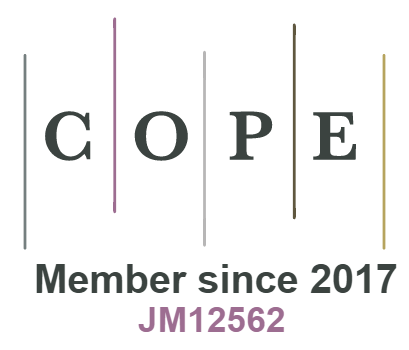Electromagnetic Radiations: A Possible Impact on Population of House Sparrow (Passer Domesticus)
DOI:
https://doi.org/10.18034/ei.v3i1.198Keywords:
Electromagnetic radiations, phone antennae, house sparrow, Passer domesticusAbstract
The modern world is a full of contamination of radiofrequency (RF), “electrosmog” in the urban centers especially after the rapid introduction of mobile telecommunications systems. The aim of this study is to determine the impact on population of house sparrow, Passer domesticus by electromagnetic radiation (microwaves) from phone antennae. By monthly monitoring in urban and rural area, it is found that the population of house sparrow is declining in the urban area, where cell phone towers are more as compared to the rural area in every season.
Downloads
References
Balmori, A, 2005. Possible Effects of Electromagnetic Fields from Phone Masts on a Population of White Stork (Ciconia ciconia). Electromagn Biol Med, 24: 109-119.
Balmori, A. 2003. The effects of microwaves on the trees and other plants. Valladolid, Spain, 2003b. Available online at buergerwelle. de.
Balmori, A. 2006. The incidence of electromagnetic pollution on the amphibian decline: Is this an important piece of the puzzle? Toxicological and Environmental Chemistry, 88: 287–299.
Balmori, A. 2009. Electromagnetic pollution from phone masts. Effects on wildlife. Pathophysiology, 16: 191–199.
Balmori, A. and Hallberg O. 2007a. The Urban Decline of the House Sparrow (Passer domesticus): A Possible Link with Electromagnetic Radiation. Electromagnetic Biology and Medicine, 26: 141–151.
Balmori, A. and Hallberg O. 2007b. Wall clining: Energy saving by the house sparrow, Passer domesticus, Ibis, 126(1):72-74.
Bhattacharya, R., Roy R., Ghosh S. and Dey A. 2010. Observations on house House Sparrow (Passer domesticus) in Delhi, India. Urban Ecosystem, 13(1):111-116.
Chopra, G., Kumar A., and Rai D. 2012. Clutch Size and Egg Morphometric Parameters of House Sparrow, Passer domesticus (Linnaeus, 1758) in District Kurukshetra, Haryana (India), Researcher; 4(6), 56-61.
Crick, H., Robinson, R., Appleton, G., Clark, N., Rickard, A. 2002. Investigation into the causes of the decline of starlings and Passer domesticus in Great Britain. BTO Research Report N_290. Department for Environment, Food and Rural Affairs (DEFRA). London.
Crick, R., Noble D., Robinson J., Brown A., Hughes J, Procter D, Gibbons D and Galbraith C. 2002. The population status of birds in the United Kingdom, Channel Islands and Isle of Man: An analysis of conservation concern. British Birds, 95:410-448.
Dandapat, A., Banerjee D. and Chakraborty D. 2010. The case of the Disappearing House Sparrow (Passer domesticus indicus). Veterinary World, 3(2): 97-100.
De Laet, J. 2004. Ligue Royale Belgue pour la Protection des Oiseaux avec l’Université de Gand, 2004, <http://www.protectiondesoiseaux.be/ content/view/801/74/> (Accessed on May 20, 2008).
De Pomerai, et al. 2003. RFR damages proteins at 0.015-0.020 W/kg. (Compare to 0.08 W/kg FCC Guideline.)
Denis, J. 2005. Distribution, abidance and dynamic of house sparrow (Passer domesticus) in Berlin. Intern. Stud. Sparrow, 32:15-23.
Dongre, S. and Verma R. 2009. Effect of Cell Phone Radiation on Gauriya Sparrows Passer domesticus. Shodh, Samiksha aur Mulyankan, Vol. II, Issue-7.
Dutta, et al. 1989. Reported an increase in calcium efflux in cells after exposure to RFR at 0.005 W/kg. Calcium is an important component of normal cellular functions. (Compare to 0.08 W/kg FCC Guideline.)
Everaert, J. and Bauwens D. 2007. A possible effect of electromagnetic radiation from mobile phone base stations on the number of breeding House Sparrows (Passer domesticus), Electromagn. Biol. Med. 26, 63–72.
Fernie, K. and Reynolds S. 2005. The effects of electromagnetic fields from power lines on avian reproductive biology and physiology: a review. Journal of toxicology and environmental health, part b, 8:127–140.
Franklin, K. 2007. The reproductive pattern amongs sparrow. Audubon naturalist society,12-27.
Ghosh, S, KiHyun K. and Bhattacharya R. 2010. A survey on house sparrow Environmental Science, Kalyani University: 147–152.
Goyal M. 2005. Preliminary survey of house sparrow ( Passer domesticus) in three areas of Haridwar, Uttrakhand. M.Sc. thesis, Gurukul Kangri University, Haridwar, India, 1-27.
Gregory, R. D., Gibbons D. W., and Donald P. F. 2004. Bird census and survey techniques.
Havas, M. 2007. Analysis of Health and Environmental Effects of Proposed San Francisco Earthlink Wi-Fi Network. Environmental and Resource Studies, Trent University, Peterborough, Ontario, Canada, K9j 7b8.
Jansen, R. R. 1983. "House Sparrows build roost nests". The Loon 55: 64–65. ISSN 0024-645X.
Khera, N, Das A, Srivastava S and Jain S. 2010. Habitat wise distribution of the house sparrow, Passer domesticus; 5(3):16-19.
Kumar, G. 2010. Report on Cell Tower Radiation. Submitted to Secretary, DOT, Delhi
Rajashekher S and Ventkanteha M 2008. Occurrence of home sparrow, Passer domesticus indicus and around Banglore. Current science, 94(4): 446-449.
Raven, M., Noble, D., Baillie, S. 2002. The breeding bird survey 2002). BTO Research Report 334. British Trust for Ornithology, Thetford.
Summers-Smith, J. 1988a. The Sparrows. illustrated by Robert Gillmor. Calton, Staffs, England: T. and A. D. Poyser, 1-11.
Summers-Smith, J. 1988b. The Sparrows, Poyser, Calton. Møller, A.P. 1987. Variation in badge size in male House Sparrows Passer domesticus – evidence for status signalling. Animal Behaviour, 35:1637-1644.
Summers-Smith, J. 1988c. The house sparrow. Colhis, London, UK: 1-18.
Summers-Smith, J. 1999. The Adaptive House Saprrow, Notorins, 21(1):88.
Summers-Smith, J. 2003. The decline of the House Sparrow: a review. Brit. Birds, 96:439–446.
Tanwar, V.S. 2006. Living dangerously in Indian cities: An RF radiation pollution perspective. Proceedings of the 9th INCEMIC, p. 458–466. Bangalore.
--0--
Published
Issue
Section
License
Engineering International is an Open Access journal. Authors who publish with this journal agree to the following terms:
- Authors retain copyright and grant the journal the right of first publication with the work simultaneously licensed under a CC BY-NC 4.0 International License that allows others to share the work with an acknowledgment of the work's authorship and initial publication in this journal.
- Authors are able to enter into separate, additional contractual arrangements for the non-exclusive distribution of the journal's published version of their work (e.g., post it to an institutional repository or publish it in a book), with an acknowledgment of its initial publication in this journal. We require authors to inform us of any instances of re-publication.









